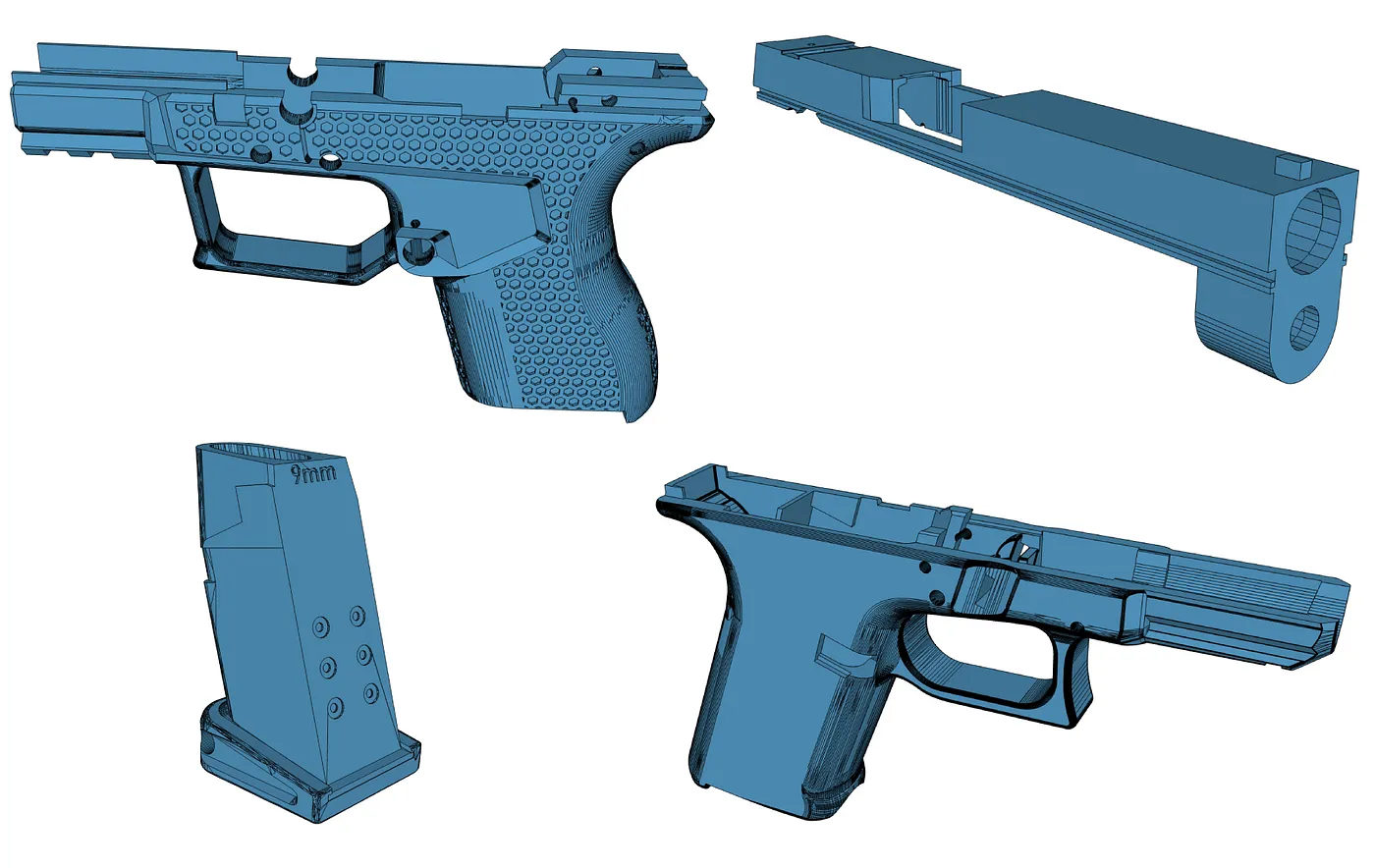3D Printing Firms in Crosshairs: Feds Crack Down on Untraceable Weapon Manufacturing
Companies
2025-03-28 11:13:17Content

In a bold move to combat rising gun violence, Manhattan District Attorney Alvin Bragg is taking aim at the proliferation of untraceable 3D-printed firearms, commonly known as "ghost guns," that are increasingly appearing on city streets.
Bragg is calling on 3D printer manufacturers to implement stricter controls and technological safeguards to prevent their devices from being used to create these dangerous, unregistered weapons. These ghost guns pose a significant threat to public safety, as they can be manufactured without serial numbers and can easily evade traditional firearm regulations.
The district attorney's initiative highlights the growing concern about the accessibility of 3D-printed firearms, which can be produced at home with relatively inexpensive equipment. By targeting the technology's supply chain, Bragg hopes to disrupt the production and distribution of these untraceable weapons.
This proactive approach seeks to close potential legal loopholes and create additional barriers for individuals intent on circumventing gun control laws. The call to action represents a critical step in addressing the evolving landscape of illegal weapon manufacturing in the digital age.
Manufacturers are being urged to develop more robust screening mechanisms and implement software restrictions that could prevent the creation of firearm components using 3D printing technology.
Unmasking the Digital Threat: 3D Printed Ghost Guns Spark Citywide Alarm
In the heart of Manhattan, a technological arms race is unfolding, where cutting-edge 3D printing technology has become a double-edged sword, transforming the landscape of urban crime and challenging law enforcement's traditional approaches to weapon control.Technological Innovation Meets Criminal Ingenuity: The Rise of Untraceable Firearms
The Digital Weaponry Revolution
The emergence of 3D-printed ghost guns represents a profound technological disruption in the realm of illegal weapons manufacturing. Unlike traditional firearms, these digitally fabricated weapons bypass conventional registration and tracking mechanisms, creating a significant challenge for law enforcement agencies. Advanced polymer-based printing technologies have empowered individuals with the capability to produce fully functional firearms from the privacy of their homes, circumventing traditional regulatory frameworks. Sophisticated computer-aided design (CAD) files and increasingly accessible 3D printing technologies have democratized weapon production, enabling individuals with minimal technical expertise to create untraceable firearms. These ghost guns lack serial numbers, making them virtually invisible to traditional forensic tracking methods and presenting an unprecedented challenge to urban safety protocols.Legal and Technological Battleground
Manhattan's District Attorney has launched an aggressive campaign targeting 3D printer manufacturers, demanding proactive measures to prevent the proliferation of these digital weapons. The legal strategy involves pressuring technology companies to implement robust software restrictions and develop advanced detection mechanisms that can identify and prevent the generation of firearm-related design files. The technological arms race between law enforcement and digital weapon manufacturers has escalated, with sophisticated software algorithms being developed to detect and block potentially dangerous 3D printing designs. Machine learning and artificial intelligence are being deployed as critical tools in identifying and preventing the creation of weapon-specific blueprints.Technological and Social Implications
The ghost gun phenomenon extends beyond mere technological innovation, representing a complex intersection of digital rights, personal freedoms, and public safety. 3D printing technology, originally conceived as a tool for creative and industrial innovation, has been co-opted by individuals seeking to exploit regulatory gaps in weapon control. Cybersecurity experts warn that the decentralized nature of digital file sharing makes comprehensive prevention extraordinarily challenging. Online platforms and encrypted communication channels facilitate rapid dissemination of weapon design files, creating a persistent challenge for regulatory bodies attempting to control their spread.Collaborative Prevention Strategies
Addressing the ghost gun challenge requires a multifaceted approach involving technology companies, law enforcement, and regulatory agencies. Proposed strategies include developing advanced digital fingerprinting technologies, implementing stricter software licensing requirements, and creating comprehensive tracking mechanisms for 3D printing technologies. Collaborative efforts between technology manufacturers, cybersecurity experts, and law enforcement agencies are crucial in developing proactive prevention strategies. This includes creating sophisticated digital watermarking techniques, implementing robust authentication protocols, and developing machine learning algorithms capable of identifying potentially dangerous design patterns.Future of Digital Weapon Control
The ongoing battle against 3D-printed ghost guns represents a critical test of technological governance in the digital age. As 3D printing technologies continue to evolve, regulatory frameworks must adapt rapidly to address emerging challenges, balancing technological innovation with public safety considerations. Emerging technologies like blockchain verification, advanced machine learning, and real-time design file monitoring are being explored as potential solutions to track and prevent the unauthorized production of untraceable firearms. The future of weapon control will likely depend on the ability to develop sophisticated, adaptive technological countermeasures.RELATED NEWS
Companies

Ticket Giant StubHub Gears Up for Wall Street Debut: IPO Fever Sweeps Tech Landscape
2025-03-21 20:28:46
Companies

Cybersecurity's Elite: The Groundbreaking Guardians Reshaping Digital Defense in 2025
2025-02-18 15:00:00
Companies

Local Vet Heroes: Michigan Honors Emergency Animal Hospital in Prestigious Statewide Recognition
2025-03-07 01:44:06





